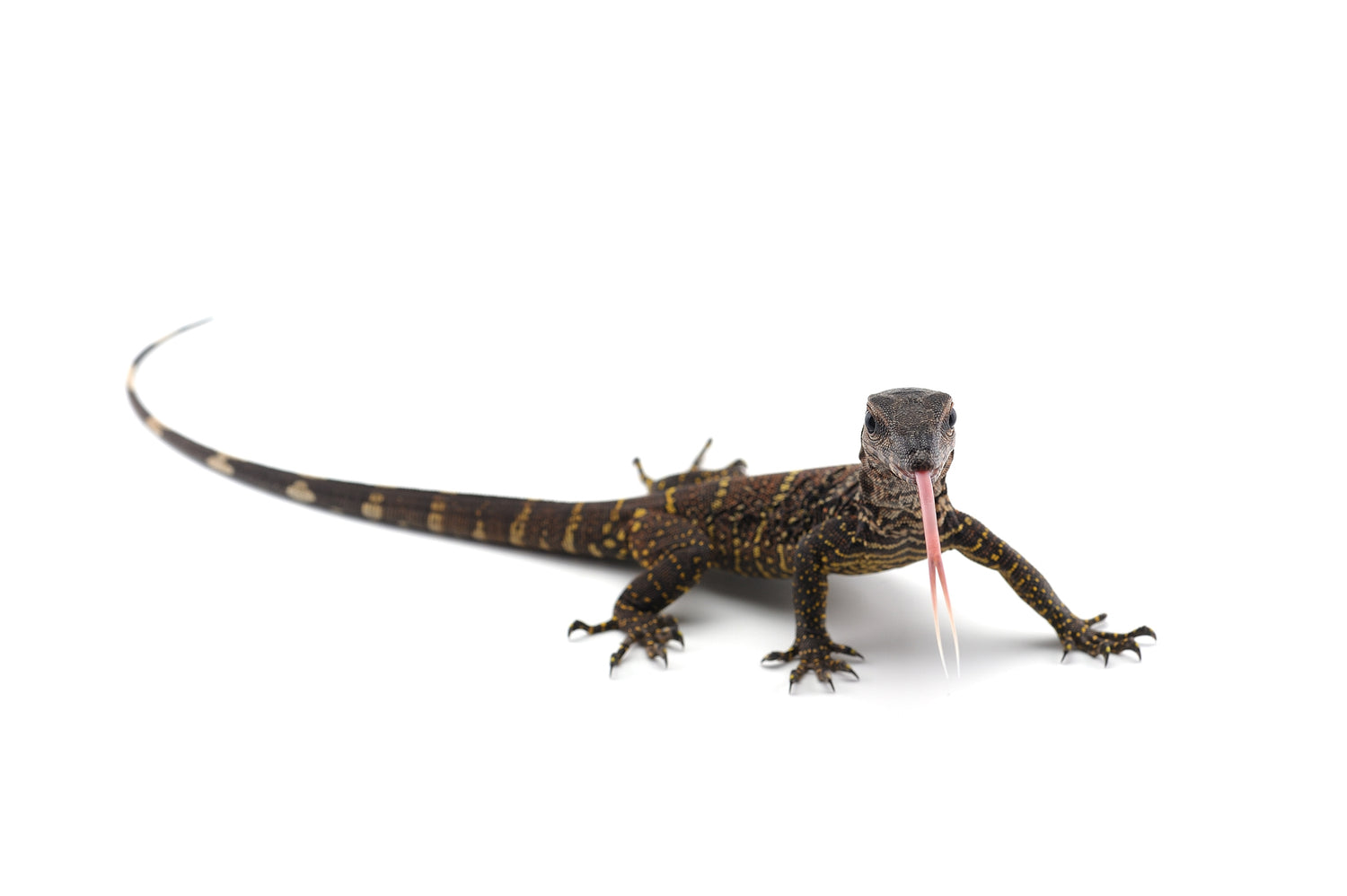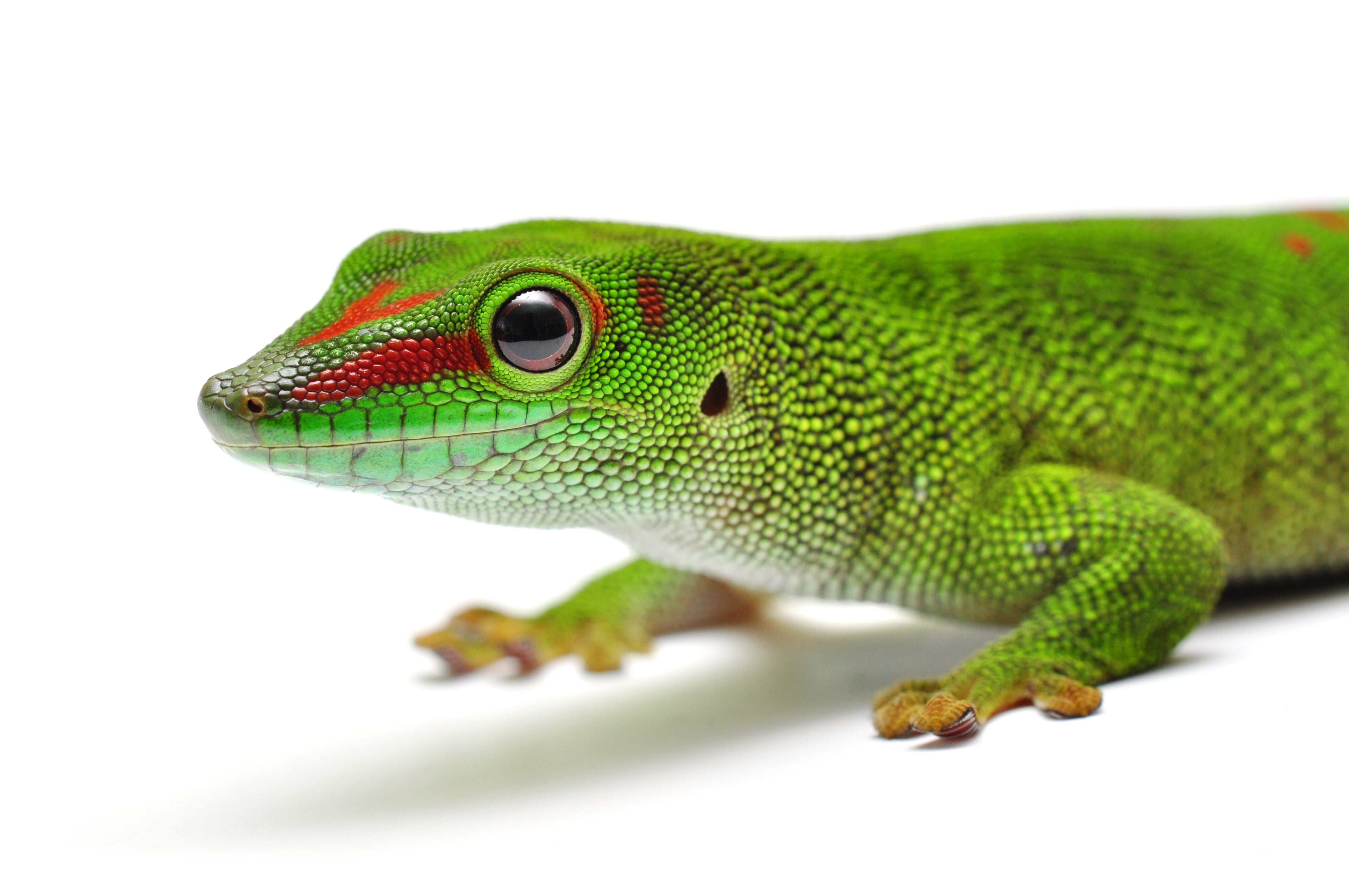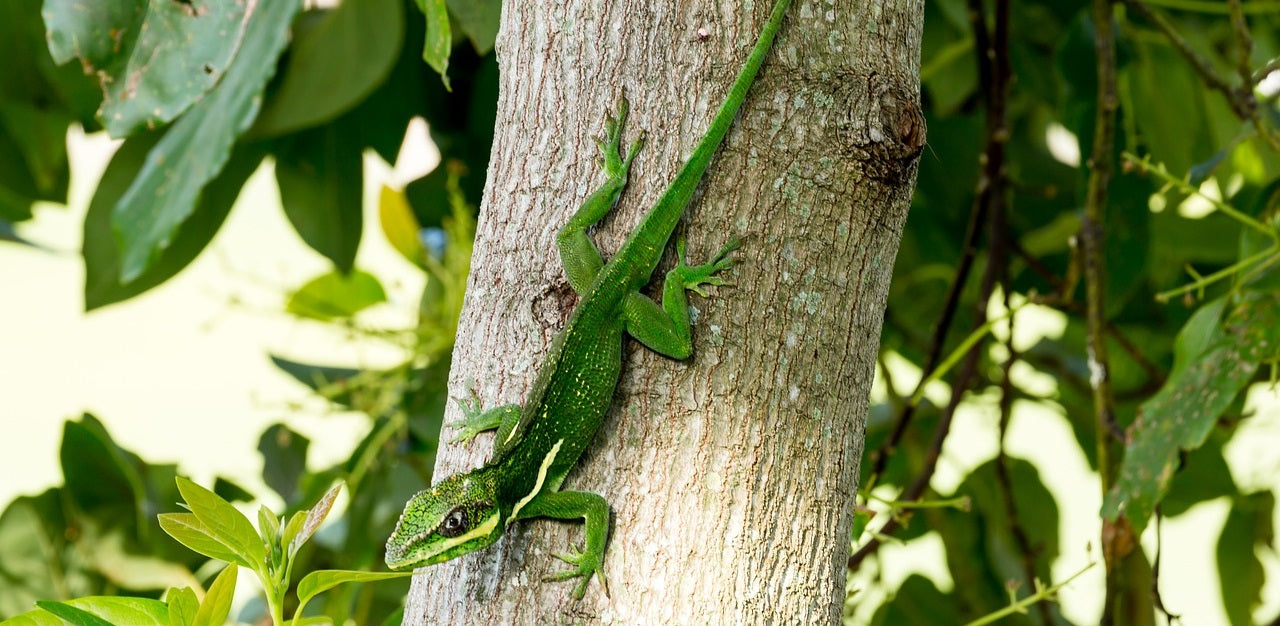Argus monitors (Varanus panoptes) are 3.5-5’ long, diurnal, terrestrial lizards native to Indonesia, New Guinea, and certain parts of Australia. They generally prefer riparian (close to water) habitats, and are strong swimmers.
Argus monitors usually have a brown to reddish background color with dark markings around the head and banded pale spots on the body. Males are significantly larger than females. Both sexes are slender yet powerfully built.
Argus monitors are active, engaging, and can have intense personalities. They’re extremely active, and do not like to be grabbed. They can make great pet reptiles for advanced-level keepers willing to put in the work.
How much space do argus monitors need?
Because of their large size, a single adult argus monitor should be housed in no smaller than a 8’L x 4’W x 4’H enclosure. If at all possible, larger is strongly recommended, in addition to regular opportunities to free-roam (supervised) for exercise. This size of enclosure is not typically available for purchase, so you will likely need to order one custom-made or build your own.
Young argus monitors less than 18” long can be temporarily housed in a 36”L x 18”W x 18”H terrarium with at least 6” of substrate.
Cohabitation (keeping multiple argus monitors in the same enclosure) is not recommended.
Do argus monitors need UVB?
Although argus monitors have been shown to be able to survive without UVB lighting with the right diet, we still recommend providing UVB to your pet as part of providing optimum husbandry. Aside from helping provide a day/night cycle and providing an infinite supply of vitamin D, UVB is also good for the lizard’s overall health.
Here are the best UVB bulbs for argus monitors housed in a 8’L x 4’W x 4’H enclosure:
- Arcadia Desert 12%, 46”
- Zoo Med Reptisun T5 HO 10.0, 46”
The UVB should be mounted inside the enclosure. Elevate the basking surface so your monitor’s back will be 14-16” below the lamp. The UVB bulb should be housed in a reflective fixture like the Arcadia ProT5 and placed on the basking side along with the heat lamp. Make sure that the fixture your UVB bulb is housed in does not have a clear plastic bulb cover.
Since argus monitors are active during the day, it’s beneficial to provide an additional daylight-spectrum lamp to make sure the enclosure is brightly illuminated. This is extra important since you will be using such a large enclosure. Use 6’ of strong 6500K LED or T5 HO fluorescent plant grow lights for best results.
Lights should be on for 12 hours/day.
What basking temperatures do argus monitors need?
Adult argus monitors need a basking surface temperature of 140-145°F, but juveniles may prefer lower temperatures around 120-125°F. A cooler area should be available on the opposite side of the enclosure, as low as 75°F, but no higher than 85°F. Nighttime temperatures should be no lower than 70°F. Surface temperatures can be measured with an infrared thermometer (“temp gun”).
Provide heat for your monitor by imitating the sun with a cluster of halogen heat lamps placed on one side of the enclosure. You will need enough lamps to evenly heat an area at least the size of the lizard’s body. Do not use ceramic heat emitters (CHEs), heat mats, red bulbs, or blue bulbs, as these are not as effective.
Heating should be turned off at night, unless the enclosure gets cooler than 70°F at night. In that case, use a radiant heat panel connected to a thermostat to maintain a comfortable ambient temperature.
What humidity levels do argus monitors need?
Argus monitors are a tropical species that needs a humid environment to stay healthy. Average humidity levels should be between 60-80%. Humidity should be measured with a wall-mounted digital hygrometer placed in the middle of the enclosure. Daily misting with a pressure sprayer and/or using a humidifier connected to a humidistat is helpful for maintaining high humidity.
Reptile humidifiers and foggers should only be used with distilled water and require frequent disinfecting to keep your reptile from getting sick.
Argus naturally live near bodies of water in the wild, and seem to do better in captivity when there’s a pool in their enclosure. For this reason, your pet will need its own “swimming pool.”
At very least, the pool needs to be 1/2 to 1/3 the length of the enclosure and large enough for them to completely submerge (at least 12” deep). Of course, deeper is better if you can provide it. Change out the water once weekly or whenever it gets soiled, and give the basin a good scrub with disinfectant before refilling. Using a siphon (or better yet, a mechanical water pump) and a hose will make emptying and refilling the pool much easier.
What substrate is good for argus monitors?
Using substrate in your argus monitor’s enclosure covers the floor, cushions your pet’s body, helps maintain humidity, and gives the lizard something to dig around in. We recommend the following substrates for argus monitors:
- Zoo Med ReptiSand
- Exo Terra Desert Sand
- Play sand
- 60/40 soil/sand mix
Layering clean, chemical-free leaf litter on top of the substrate can help with humidity as well as add enrichment value.
Substrate should be at least 12” deep (preferably deeper) and completely replaced every 3-4 months. Remove poop and urates daily, along with any contaminated substrate.
What décor can you use in an argus monitor enclosure?
Argus monitors are highly intelligent and curious animals, so it’s terribly boring for them to be stuck in an enclosure with nothing in it except a water tub and somewhere to hide. It doesn’t matter how big the enclosure is if you don’t put things in it for your pet to use and interact with.
Here are some ideas:
- sturdy climbing branches
- hollow logs
- tree stumps
- artificial boulders
- additional hiding places (dog/cat kennels work well)
- live or artificial plants
Although argus monitors are clumsy climbers compared to some other monitors, providing climbing material is still valuable. Climbing branches should be well anchored to the walls and/or floor of the enclosure to prevent collapse.
What do argus monitors eat?
Argus monitors are carnivorous, which means that they need to eat an animal-based diet to get the nutrition that they need. They generally eat primarily insects as youngsters, and transition to a diet of vertebrates and large insects as they grow larger. Here is a general feeding schedule:
- Juveniles (<3’ long) — daily
- Subadults and Adults (>3’ long) — 3-4x/week
Each meal should be roughly the same size as the monitor’s head.
Feeder insect options: crickets, discoid roaches, dubia roaches, earthworms, grasshoppers, hornworms, silkworms, mealworms, superworms, black soldier fly larvae, snails (captive-bred only)
Other protein options: mice, small rats, quail, chicks, fish, lizards, snakes, eggs (whole), organ meat
Supplements
You will also need calcium and vitamin supplements to prevent your monitor from developing a deficiency. We recommend Repashy Calcium Plus LoD, lightly dusted on all insects and meats.
Do argus monitors like to be handled?
As adults, argus monitors are too large to be held, and as juveniles, they may be too skittish for handling. The key, instead, is to build a trusting relationship with your monitor so it will let you pet it and pick it up when needed. Offering food from feeding tweezers works well as an initial bribe, and it’s best to get the lizard to come to you rather than simply grabbing it — a bite from a startled or defensive adult argus monitor can cause serious injury! Their claws are something to beware of as well.
If you need to pick up your argus monitor, be gentle. Don’t grab the lizard from above — instead, approach from the side and scoop from below. Support as much of its body as possible, especially its feet, and hold it close to your body to help it feel secure during carrying. Wearing welding gloves can be a good way to protect yourself when you need to pick up an argus monitor.
*This care sheet contains only very basic information. Although it’s a good introduction, please do further research with high-quality sources to obtain additional information on caring for this species.




Leave a comment
This site is protected by hCaptcha and the hCaptcha Privacy Policy and Terms of Service apply.